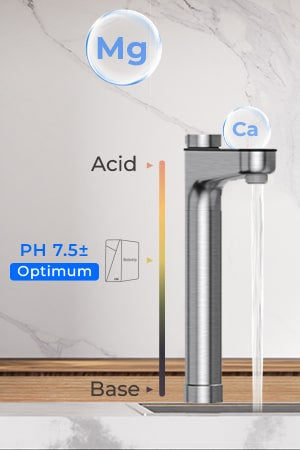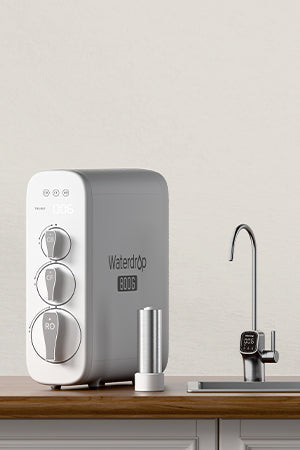Recent studies have shown that boiling tap water before drinking
almost 90% of microplastics can be removed from the water source. The National Oceanic and Atmospheric
Administration (NOAA) defines microplastics as very small plastic particles with a size of less than
5 mm.
According to the World Health Organization, there are currently few and unclear
Studies on the effects of these microplastics on human health. While some polymers such as
Polystyrene appear to be safe, studies have shown that they damage human cells,
stimulate the digestive tract and reduce the fertility of mice.
The journal “Environmental Science & Technology Letters” recently published a
Study published that has some positive news in the fight against these insidious petrochemical
This means that a large part of the microplastics can be removed from the water by boiling and filtering.
tap water, making drinking water safer.
Where does microplastic come from and what does it mean?
Plastic is the most common marine debris in the Great Lakes and Oceans.
While plastic waste can come in many different shapes and sizes, “microplastics” are defined as particles
which are smaller than 5 mm or about the size of a pencil eraser. Microplastic pollution
can have adverse effects on our oceans and aquatic organisms.
Much information about microplastics and their effects is still unknown, as
research on them is still in its infancy. In this case, the NOAA Marine Waste Project is responsible for
responsible for monitoring and inspection. Conventional on-site techniques for sampling
Microplastic samples from sand, surface water and sediments are still being tested.
Where does microplastic come from?
There are various sources of microplastics, such as shredding
larger plastic waste into smaller and smaller pieces. In addition, a special microplastic called
Microbeads made of tiny polyethylene plastic particles that are used as peeling agents in cosmetics and other health products.
and beauty products such as toothpaste and cleaning products. Since these small particles easily
can enter the ocean and the Great Lakes through water filtration systems, they can pose a threat to
aquatic organisms.
The problems surrounding microbeads are not new. When plastic began,
replacing natural ingredients in personal care products.
How is it possible that your drinking water is free of microplastics?
It is currently not possible for the average consumer to purchase water at home
for microplastics. However, you can send water samples to the laboratory for analysis; this is a
expensive method that could confirm the presence of microplastics to some extent.
As the problem of microplastic pollution becomes more and more common,
expected to enact regulations on microplastics in water. In September 2022, California became
first state to require microplastic testing for drinking water sources, setting a precedent.
Boil the water before drinking
A study just published in Environmental Science and Technology Letters on 28.
February, found that boiling mineral-rich water for five minutes reduced exposure
compared to non-microplastic particles (NPPs) by 90%.
The health risks associated with contact with microplastics are
The researchers are still not aware of this, but there is increasing evidence that these plastics are
accumulate and cause oxidative stress, inflammation and liver problems.
New evidence suggests that boiling water is a potentially safe
and simple method to effectively purify tap water in the home. This can be particularly useful for less
developed countries where affordable and easily accessible solutions for clean water
are crucial.
purchase of a reverse osmosis filter system
It takes time for the water to boil and cool before drinking.
Although this is an economical method, it may not be practical for daily water use.
Fast hot water reverse osmosis filter system
Do you choose hot water? Check out our innovative reverse osmosis systems
Waterdrop C1H and K19, which offer unmatched comfort. These state-of-the-art filter systems eliminate the
Need for delays and allow immediate access to hot water, unlike
traditional methods of boiling water and waiting.
Waterdrop K19-H instant hot water dispenser with
countertop reverse osmosis system
€336.13
The Waterdrop K19 and C1H make it easy if you are looking for a soothing
tea or a hot cup of coffee. Enjoy your favorite hot beverage with maximum convenience
thanks to our systems that effortlessly integrate efficiency and choice into your everyday life.
Possible health effects of microplastics
Oceans, remote islands and polar regions are common locations for
Environmental pollutants known as microplastics. The potential threat to the ecosystem from
Microplastics make exposure a serious new risk.
We knew years ago that microplastics were a problem, and new studies
have highlighted the major threats they pose to the environment and human health.
Due to its extreme durability, microplastics are removed from the areas where
They are difficult to remove because they accumulate. Studies have shown that due to their persistence and the
chemicals contained in them can cause serious harm to the organisms to which they are exposed. These
Dangers include higher mortality, reduced food intake and poisoning. In addition, they carry
contribute to pollutants moving up the food chain, which can harm human health
can seriously endanger.
Scientists warn that things are getting out of control and
Wherever microplastics have been investigated, positive results have been obtained, including in the
mountains, in the ocean, in the Arctic sea ice and even in our bodies, drinking water and air.
CONCLUSIONS
In summary, the concern about microplastics in water underlines the need
of remedial measures. Our reverse osmosis systems can help. They protect you from clever microplastics
and don't just filter water. Thanks to our systems, your water is safe and clean to drink.

































































